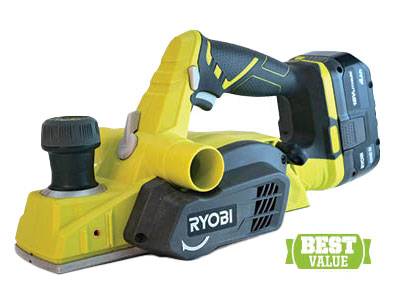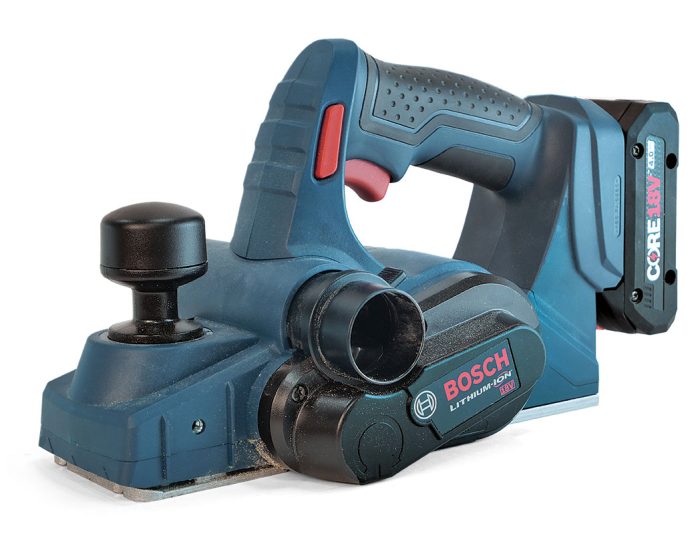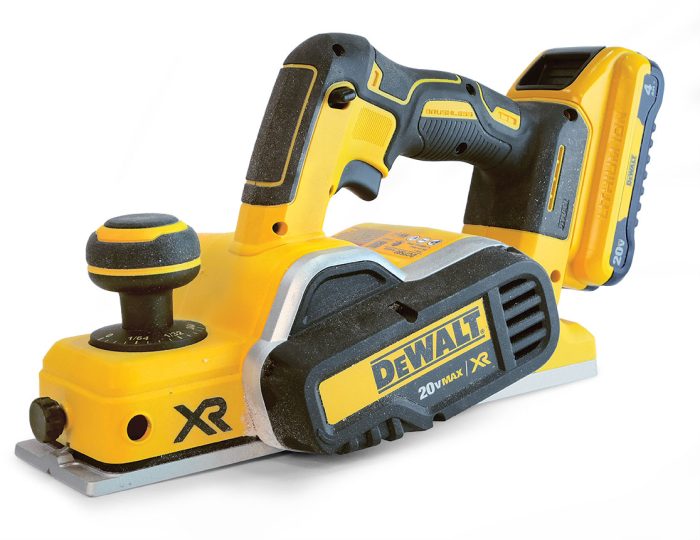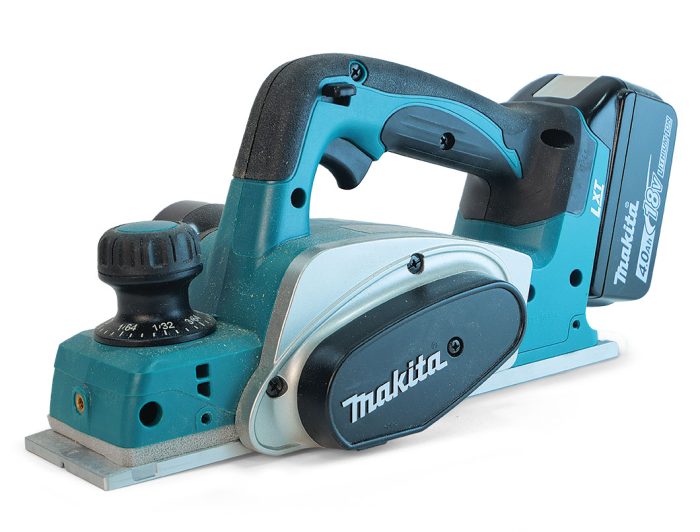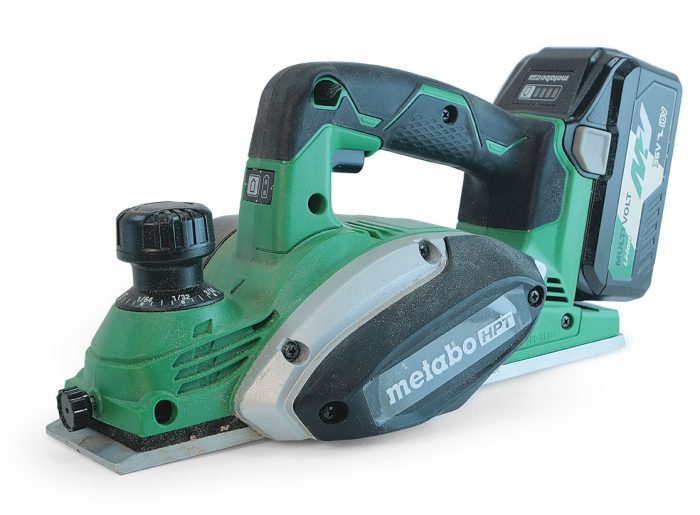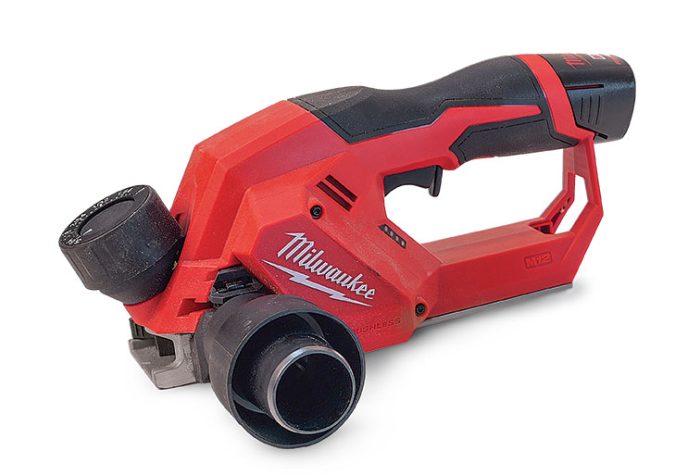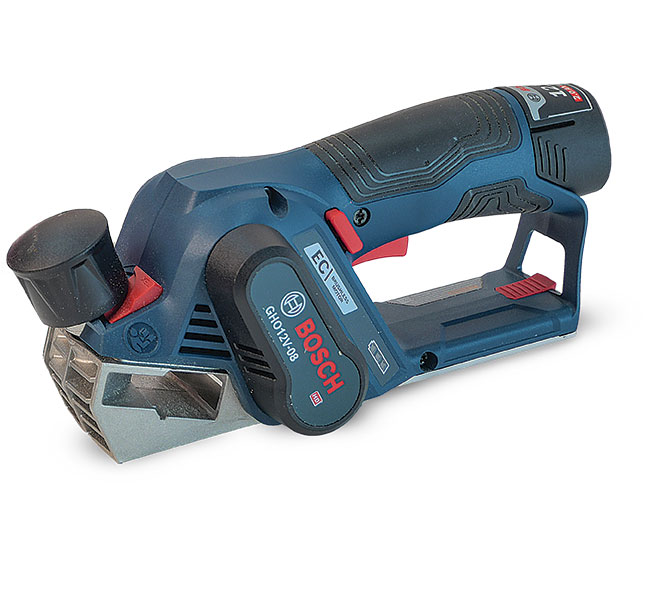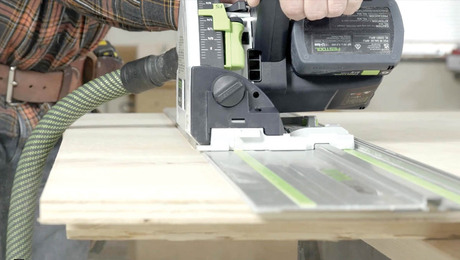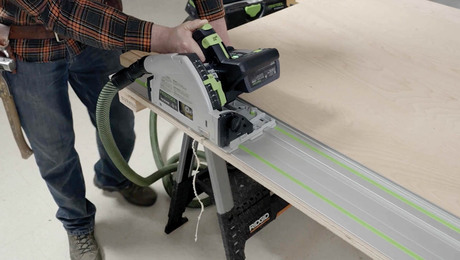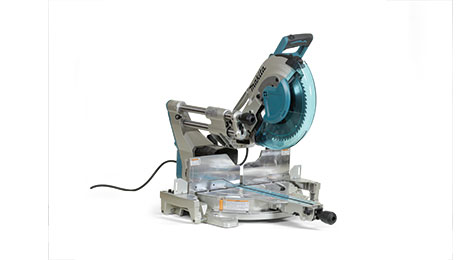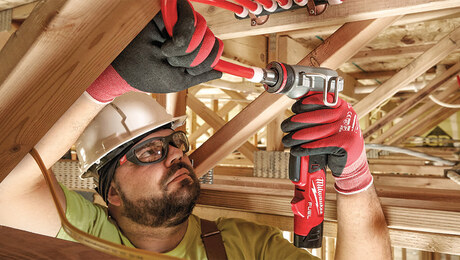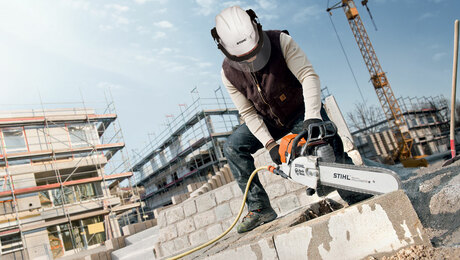Tool Test: Cordless Planers
With quick and effortless stock removal and easy-to-replace disposable blades, these power planers make it easy to leave your hand plane safely at home.
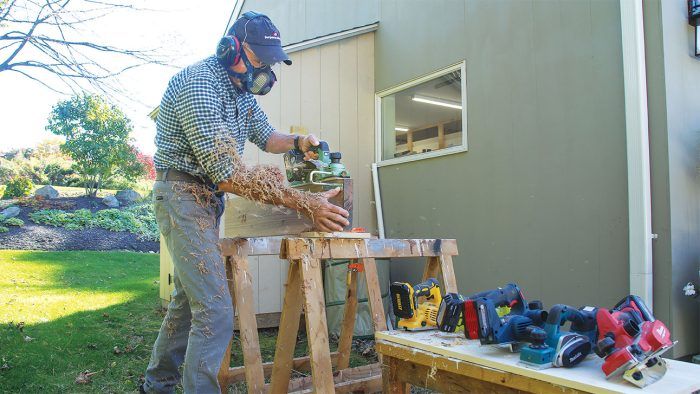
I’m resistant to use my good hand planes on a job site because a nick in the plane’s iron from a nail or staple can take a half-hour or more to fix. But a nicked or dull blade is no big deal with a power planer, as the disposable blades can be swapped in minutes. They also take a lot less effort to use compared to a hand plane—and the cordless models are especially useful in cramped spaces.
For this article, I had the chance to test cordless planers from Bosch, Makita, DeWalt, Metabo HPT, Ryobi, and Milwaukee. All have 3 1⁄4-in.-wide disposable carbide blades, bevel grooves on the bottom to simplify easing edges, and small kickstands that flip down to elevate the cutter head so you can set the tool down with the blade still spinning. I also tried out two smaller cordless models from Bosch and Milwaukee. Their small size makes them ideally suited to finish carpentry, where a smaller planer is an advantage. All the model numbers and prices reflect the tool-only version, though some manufacturers offer kits with batteries and chargers.
There’s a broad range of tasks you can take on with these power planers. They’re great for fitting inset cabinet doors, which calls for a light touch. You can also use them for massive stock removal and to straighten bowed framing or flatten wide hardwood slabs. Between these extremes, there are more-common finish-carpentry jobs like trimming full-size doors, shaving down extension jambs, and planing to a scribed line so built-ins and cabinets fit tight to a wavy wall. I kept this wide-ranging job description in mind when evaluating the performance of the planers on this list.
All the planers use double-edged carbide blades that hold up well when planing all kinds of wood. When edges get dull, you simply reverse each blade to expose a fresh edge. Blade changes are easier on some models than others; the Bosch planers stand out because their cutter heads are counterbalanced to hold just a single blade rather than two blades. This makes blade changes faster and eliminates any chance the two blades may be misaligned, resulting in a rougher pass. If you’re planing old stock with the possibility of embedded nails, DeWalt, Metabo HPT, and Makita offer lower-cost blades made from less expensive, resharpenable high-speed steel instead of the more durable, more expensive carbide.
Features for a winning tool
I like to be able to eject chips on both sides of the planer so they’re not blowing all over me or blocking the view when I’m planing. The Metabo HPT, Makita, and DeWalt planers have chip ejection (and thus, dust collection) only on the right side of the tool. All other models (including the two smaller planers) let you choose right or left. Kudos to Ryobi for supplying a dust bag with their inexpensive planer, unlike the other larger models. Not all planing jobs require a fence, but when a straight, square-edged pass is needed, it helps to have a large fence as your guide. All the larger planers include a fence except for the Makita, whose straight fence is an additional $23 (and one capable of beveling sells for $22). The Milwaukee’s fence is the best of the bunch, because it’s the biggest and can make bevel cuts in addition to flat, 90° passes. The fences on the Metabo HPT and Ryobi models are too small, but you can overcome this deficiency by attaching a wood auxiliary fence. The Metabo HPT’s fence is predrilled for an auxiliary fence, but the Ryobi is not. The two smaller models aren’t designed to use fences.
If you primarily need raw planing power for surfacing rough-cut hardwood boards and slabs, the best choice would be the Makita or Metabo HPT models. These two old-school (brushed-motor) heavyweights are what I’d use to roughly flatten and smooth wide slabs for live-edge countertops and furniture. The Milwaukee and Bosch planers are both excellent choices for general carpentry and finish work. They’re well-made tools with good fences, easy blade changes, and the ability to tackle heavy stock removal and precise shaving tasks. Forced to pick one, I’d choose the Milwaukee because its fence can be adjusted to bevel and I also like the well-placed lever that allows you to easily change which side the chips are ejected.
The two small planers I tested—also from Milwaukee and Bosch—could quickly earn a place in any trim carpenter’s toolbox. Easily operated with one hand, these tools have good dust collection and, thanks to their compact size, they excel at planing small sections of molding and cabinet boxes so that they fit correctly in spaces that aren’t flat, square, or plumb. They’re also great for tapering or trimming narrow stock like extension jambs for doors and windows.
How we tested

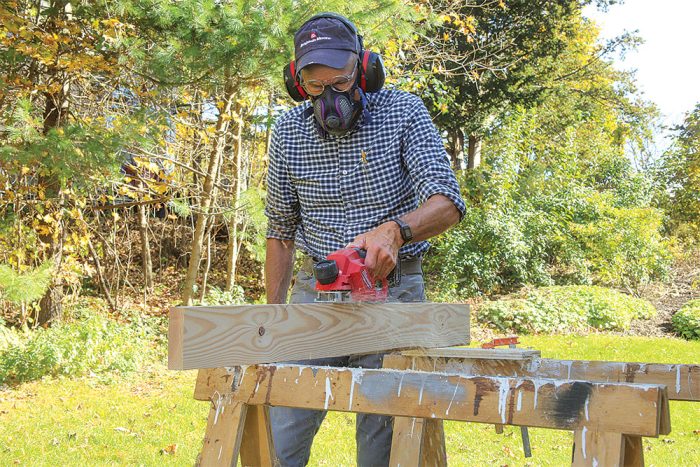
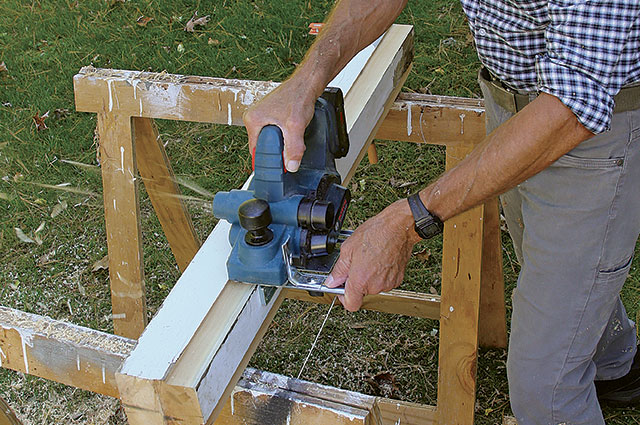
MILWAUKEE 2623-20

Speed: 14,000 rpm
Max cut: 5/64 in.
Weight:* 6.28 lb.
Price: $230
Choosing a favorite between this planer and the Bosch was tough. The deciding factor for me was the Milwaukee’s large fence, which is a real confidence-builder if you’re not accustomed to using these tools. It’s also the only included fence with a bevel adjustment—a handy feature for beveling door edges. It combines light weight with ample power, making it a great all-purpose planer.
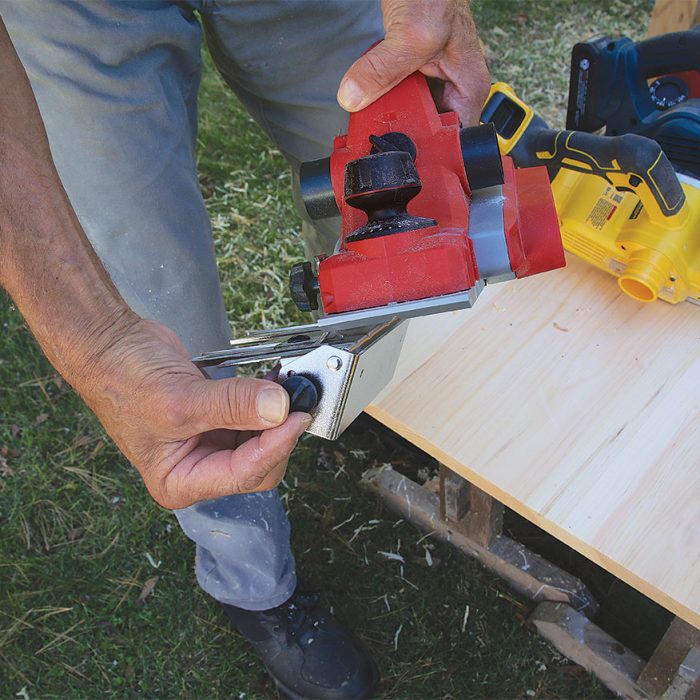
RYOBI P611
Speed: 11,000 rpm
Max cut: 1/16 in.
Weight: 5.16 lb.
Price: $80
This planer gets the job done for at least $80 less than the similarly sized competition, making it a no-brainer best-value pick. Despite its low price, the Ryobi scored in the middle of the pack in terms of power and smoothness. I would have liked a fence with a larger bearing surface, or at least a pair of holes for attaching an auxiliary fence, but that’s probably nitpicking for its price.
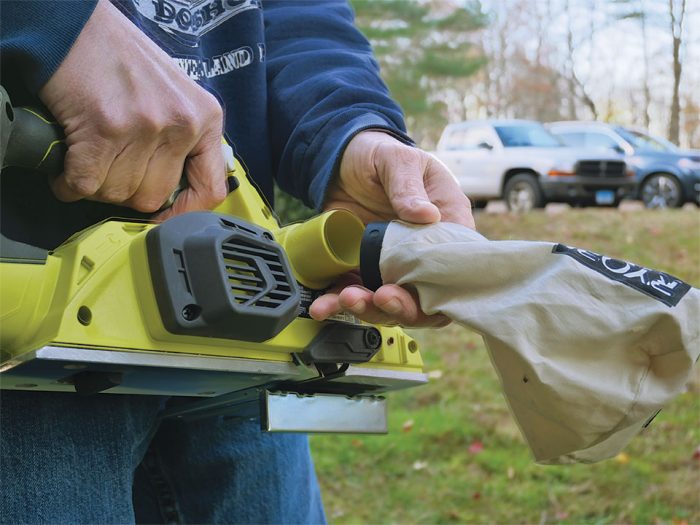
BOSCH PLH181B
Speed: 14,000 rpm
Max cut: 1/16 in.
Weight: 4.45 lb.
Price: $220
This planer wins the prize for innovative features. For safety, you can’t access the blade-change wrench unless you first remove the battery. And the counterbalanced cutter head holds a single blade that planes just as smoothly as double-bladed models. I like knowing that if I hit a nail, I’ll only have one blade to change. It’s a fine choice for an all-around planer and my second-favorite 18v model in the test.
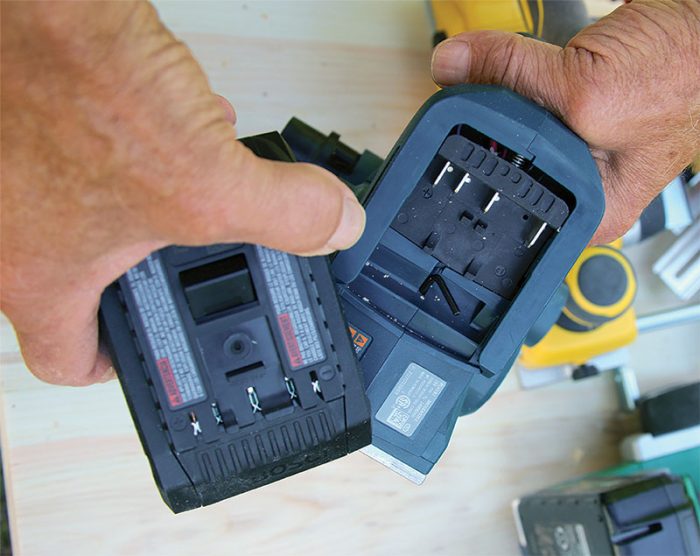
DEWALT DCP580B
Speed: 15,000 rpm
Max cut: 5/64 in.
Weight: 5.57 lb.
Price: $230
This tool has a rugged, no-frills design. Chip discharge on the right side only might cause problems in some applications; otherwise, the planer is easy to use, and it
gets bonus points for being the only model with spare blades stowed on the tool—plus it includes an onboard blade wrench.
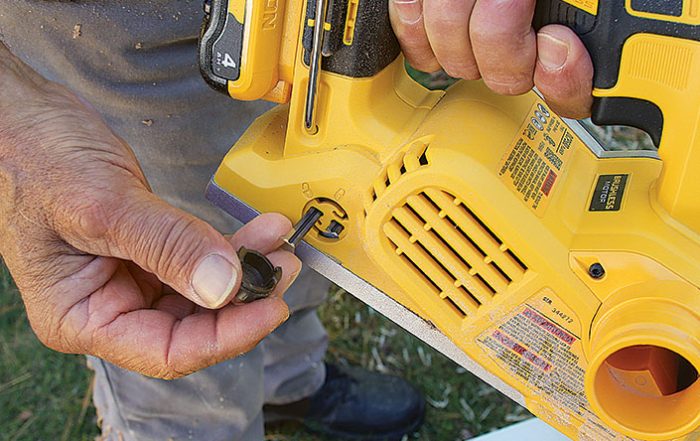
MAKITA XPK01Z
Speed: 15,000 rpm
Max cut: 5/64 in
Weight: 6.10 lb.
Price: $220 ($23 fence)
This is a heavy, powerful tool that easily handled every shaving assignment I gave it. Planed surfaces were incredibly smooth. Like the Metabo HPT, this is more of an old-school tool, lacking an onboard wrench and two-way chip ejection. The hassle and extra expense of buying an edge guide detracts from an otherwise top-quality tool.
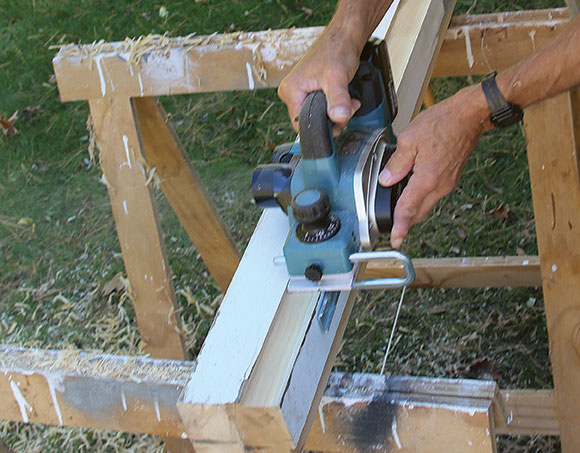
METABO HPT P18DSLQ4
Speed: 16,000 rpm
Max cut: 5/64 in.
Weight: 6.11 lb.
Price: $160
This tool is very similar to the Makita in design, performance, and feel. It packs plenty of power, too. The tool-only option includes an edge guide, but you’ll need to pay extra for a dust-port adapter that allows you to connect a vacuum hose.
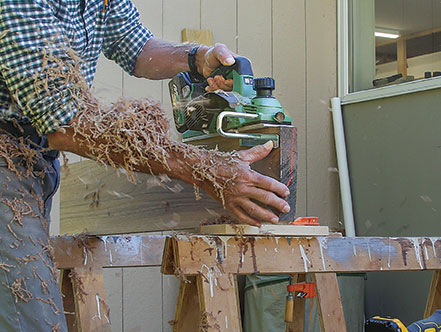
MILWAUKEE 2524-20
Finish carpenters will find the 2-in. cordless planers from Bosch and Milwaukee to be very handy. They fit in smaller spaces than the 3-1⁄2-in. models and are designed for one-handed use, freeing your other hand to steady the stock. These 12v machines, relatively new to the market, are great for scribe-fitting cabinets and built-ins, adjusting trim for out-of-plumb or -level conditions, and smoothing narrow stock.
Speed: 14,500 rpm
Max cut: 5/64 in.
Weight: 3.38 lb.
Price: $200
Milwaukee’s 2-in. model discharges chips on either side and comes with a dust port that accepts two sizes of vacuum hose. The tool’s depth-of-cut adjustment includes an easy-to-read scale.
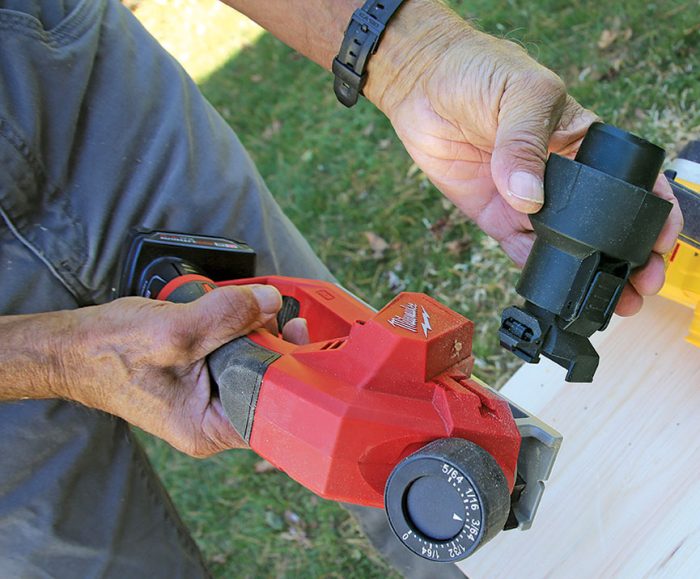
BOSCH GH0112V-08N
Speed: 14,500 rpm
Max cut: 5/64 in.
Weight: 3.31 lb.
Price: $190
Bosch’s 2-in. planer has a single-blade cutter head like its big brother and can discharge on either side of the tool. Its dust-control provisions make it my favorite of the smaller planers. It has a small but functional dust bag and a dust port for attaching a vacuum hose on either side of the planer.
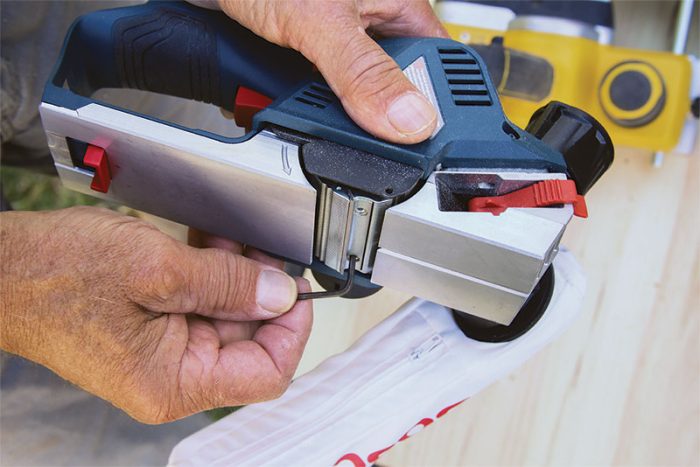
Tim Snyder is a carpenter, writer, and woodworker in Newtown, Conn. Product photos by Melinda Vazquez. Other photos by Patrick McCombe.
** All planers weighed without batteries or accessories
RELATED STORIES
From Fine Homebuilding #321
